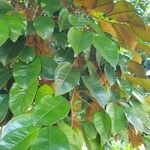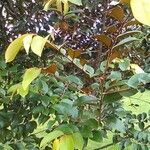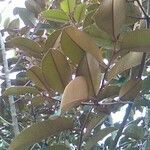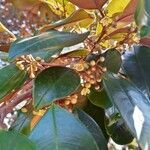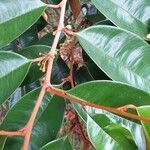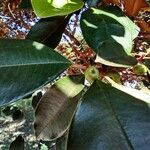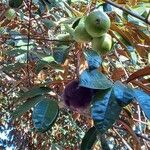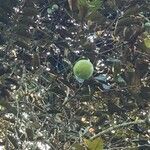An evergreen tree up to 12-25 m high. It spreads 4-8 m across. The stem is erect but the branches hang down. Leaves are small, hairy, shiny and dark green on top and red/yellow underneath. Young parts of the plant are hairy, with soft silky rust coloured hairs. The flowers are mauve and small. They occur in clusters scattered among the mature twigs. The fruit are smooth skinned and 5-10 cm across. Fruit are oval shaped, yellow at first and light purple when ripe. When the fruit is cut crossways the star shape can be seen. The fruit pulp is white and sweet. The flesh can be purple in some kinds. It contains up to 10 shiny dark seeds.
This tropical American species has an elliptic leaf, usually 10–12 cm. long, the undersurface of which is clothed with an attractive and persistent reddish-brown silky indumentum.. The fruit, known as the star apple or caimito, is greenish-yellow or purplish with a delicious soft pulp. It is usually subglobose and up to 12 cm. in diameter.
